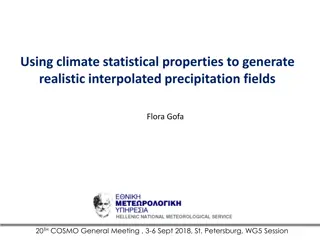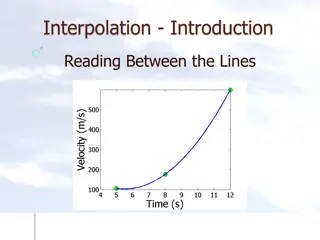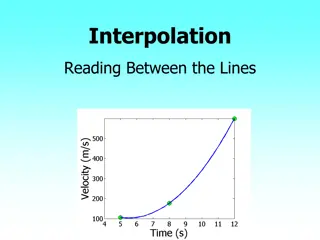
Newton's Interpolating Polynomials in Mechanical Engineering
Explore Newton's Interpolating Polynomials in Mechanical Engineering, specifically focusing on first-order, second-order, and third-order polynomials. Learn how to calculate coefficients, understand divided differences, and apply these concepts in practical examples such as determining windmill power output based on wind speed measurements.
Download Presentation

Please find below an Image/Link to download the presentation.
The content on the website is provided AS IS for your information and personal use only. It may not be sold, licensed, or shared on other websites without obtaining consent from the author. If you encounter any issues during the download, it is possible that the publisher has removed the file from their server.
You are allowed to download the files provided on this website for personal or commercial use, subject to the condition that they are used lawfully. All files are the property of their respective owners.
The content on the website is provided AS IS for your information and personal use only. It may not be sold, licensed, or shared on other websites without obtaining consent from the author.
E N D
Presentation Transcript
Faculty of Engineering Mechanical Engineering Department MATH 2140 Numerical Methods Instructor: Dr. Mohamed El-Shazly Associate Prof. of Mechanical Design and Tribology melshazly@ksu.edu.sa Office: F072 1
Newton's Interpolating Polynomials First-order Newton's polynomial 2
Second-order Newton's polynomial 3
A general form of Newton's polynomial and its coefficients For two points, (x1, y1), and (x2, Y2) , the first divided difference, written as f [x2, x1], is defined as the slope of the line connecting the two points: 6
EXAMPLE 2 The power generated by a windmill varies with the wind speed. In an experiment, the following five measurements were obtained in table below. Determine the fourth-order Newton s interpolating polynomial that passes through the data points. Use the polynomial to calculate the power at a wind speed of 26 mph. 15
Solution 2 16

















